Can you list some fruits that start with K? Kiwi is probably the one entering your mind first. However, there are so many more options that you might haven’t known before.
From the most popular kiwi, kumquat, to the mysterious ones like kabosu, korlan, and beyond, each fruit is special in its own way. And this guide is your key to unlocking these natural K-titled foods with their details about flavor, texture, uses, nutritional advantages, or origins.
Moreover, this exploration is not just limited to fruits; you’ll also get acquainted with some remarkable K-named vegetables.
So, keep scrolling the page and start this flavorful exploration together!
23 Fruits That Start with K with Filters
Let’s unveil 23 fruits with names starting with D! Use the filters to assist you in finding national, exotic fruits, and those suited for cooking, drink-making, or as garnishing.
Kiwi
- China
- For Beverages
- For Dishes
- National
Kiwi is one of the most popular fruits that start with K. Today, it is widely recognized as China’s national fruit.
Kiwi has a round to oval shape. The fruit is pulpy and juicy with black seeds inside. Its taste is somewhat sour and subtly sweet. In comparison with other fruits, kiwi is a combination of strawberries and melons.
Since the fruit contains many minerals and vitamins, eating kiwi fruits improves your immune and digestive systems.
Kumquat
- For Beverages
- For Dishes
Originating from Southern China, kumquat is an edible and orange-like fruit that is smaller than an orange. Some varieties are oval or oblong.
Kumquat flavor is a blend of sweet and tart tastes. The peel of these fruits is sweet, and the flesh inside is tart and slightly bitter. This contrast creates a complex flavor profile that is refreshing and zesty,
Kumquat is often used in making cakes, desserts, or salads. Eating kumquats also helps to prevent colds and coughs.
Kaffir Lime
- For Beverages
- For Dishes
- For Garnish
Kaffir lime fruit is a circus fruit native to tropical Southeast Asia and Southern China. This fruit is round and green and can turn yellow when ripe. Compared to other limes, kaffir is small, but it has a thick, bumpy, and warty skin.
This type of lime is especially popular in Southeast Asian cuisine, particularly in Thai, Indonesian, and Malaysian dishes.
The leaves are the most commonly used part of the plant, imparting a strong, citrusy fragrance. They are typically added to curries, soups (like Tom Yum), and stir-fries, either finely chopped or in whole leaves, which are removed before serving.
The zest of the kaffir lime fruit is also utilized to enhance flavor in various dishes and spice pastes.
Korean Pear
- For Beverages
- For Dishes
Korean pears are grown primarily in China, Korea, and Japan, where they have been planted and bred for over 3000 years. They are usually sent as gifts on special occasions.
It has a round shape and smooth brown-colored skin. Its taste is subtly sweet with a perfect crispiness.
This pear is a fresh snack or dessert and adds a sweet touch to salads. Plus, its natural enzymes make it a great meat tenderizer in marinades, particularly for Korean barbecues like bulgogi. The pear juice also enhances dressings and sauces with its mild sweetness.
Kyoho Grape
- For Beverages
- For Dishes
Kyoho grapes are a large, seeded grape variety with a deep purple, almost black skin, and a distinctly sweet, juicy interior.
They are a hybrid of Ishiharawase and Centennial grape varieties, originally developed in Japan but now also grown in other parts of Asia, especially Korea.
The skin of Kyoho grapes is thick and may be peeled away easily before eating. Renowned for their rich, muscat-like flavor, these grapes are often enjoyed fresh or used in making jellies, desserts, and wine.
Key Lime
- For Beverages
- For Dishes
- For Garnish
Key lime, or Mexican lime, is known as one of the most famous citrus fruit types. The fruit was brought to America by Spanish settlers.
Key lime looks similar to its relatives, such as limes. Like limes, the fruit has a spherical shape. It is most famous for its sharp acidity.
Key lime is popular in baking cakes, ideally American dessert key lime pie. Since it tastes sour, many people use lime juice to flavor the cakes. Another use of crucial lime is to preserve pickles and vegetables.
Kei Apple
- For Dishes
Kei apple originates from the area around the Kei River, which flows through the Eastern Cave province of South Africa. The fruit is mainly cultivated in Transvaal, a region of South Africa.
This apple variety is nearly round in shape and looks like plums in size. The fruit contains yellow berries and tiny seeds. The golden fruit is aromatic. Many people say it is sweet and similar to the apricot’s taste.
Ripe kei apple fruits can be made into jams, jelly, or cakes. You can make pickles if the apples are still unripe.
Kanzi Apple
- For Dishes
Kanzi apple is a relatively new variety that is quickly gaining popularity for its exceptional taste and texture. A hybrid between the Gala and Braeburn apples, it boasts a bright red skin with hints of yellow and green.
The flesh of the Kanzi apple is crisp, juicy, and sweet with a slight tartness. It can be enjoyed fresh, or used in recipes, like baking, cooking, and salads, as it retains its texture and flavor well when heated.
Kiwano
- Exotic
- For Beverages
- For Dishes
Kiwano, commonly called horned cucumber, is a traditional food in Africa. Kiwano is sometimes called ‘blowfish’ since it looks like a blowfish.
The ripe fruit has yellow skin and bright emerald green, jelly-like flesh. The fruit has an oval shape. The flesh inside has a high water content with a mild and slightly sweet flavor. Also, the fruit is super seedy.
Kapok
- Exotic
Kapok fruit comes from the kapok tree (Ceiba pentandra), a tropical tree well-known for its cultural and ecological importance.
The fruit is a large pod containing seeds surrounded by a fluffy, cotton-like fiber known as kapok. This light and water-resistant fiber is ideal for filling life jackets, pillows, and mattresses.
Therefore, it is less commonly consumed.
Kaywa
- For Dishes
Kaywa, or caigua, is a herbaceous vine grown for its edible fruit. It has a light green color, somehow appearing as gigantic chilis.
The fruit has a curved shape. Kaywa has smooth skin and sometimes soft spines. Unlike most fruits, kaywa has unusually shaped seeds.
For cooking recipes, the fruit is often stuffed with meat or other fillings and then cooked. It’s also consumed raw in salads.
Many people believe it to have originated from the Andes, South America.
Kantola
- For Dishes
Kantola is used in most countries in South Asia and all regions of India. The fruit is often stuffed with spices or eaten with fish in some parts of the world.
Kantola belongs to the bitter gourd family; however, the fruit is not as harsh as its relatives. The fruit’s appearance somehow would remind you of small durians. Its pulp is yellow and red when being removed from the green skin.
Kabosu
- For Beverages
Hailing from Japan, kabosu is a citrus fruit that is often compared to lime in its appearance and taste.
It’s round and green, turning yellow as it matures, with a tangy and slightly sweet flavor. Kabosu juice and even zest are highly valued in Japanese cuisine for their ability to add a refreshing citrus note to sauces, dressings, sashimi, and drinks.
Knobby Russet Apple
- For Dishes
Knobby Russet apple, or heirloom apples, has a distinctive look that may make one lose interest on the first try. In fact, the fruit is considered the ugliest apple.
Knobby Russet apple has a brown and usually warty, knobbly surface. It has a greenish-brown appearance and is medium in size.
The fruit contains complex but subtle flavors which are balanced and sweet-tart. Besides, the Knobby Russet apple also has creamy flesh.
These apples are an old British variety first found in Sussex in the late 1810s.
Kundang
- For Dishes
Kundang is a tropical fruit tree native to Southeast Asia and is currently planted commercially in Malaysia, Thailand, and Indonesia. Kundang fruits are commonly known as the “Marian plum,” “gandaria,” or “plum mango” in English.
There are two types of Kundang fruits: sweet and sour. The sweet one is light yellow, and the sour one is darker yellow. Kundang’s taste is similar to mangoes’. The entire fruit, including its skin, is edible.
Kundang can be used to cook soup, make a salad bowl, and make jam. Some people use unripened fruits to make fruit dishes and pickles.
Kwai Muk
- For Beverages
- For Dishes
Kwai muk fruit was originally planted experimentally in Florida. Later, it was recognized as native to China. A mature kwai muk tree can yield up to 2000 small fruits. The fruit ripens from August to October.
Kwai muk fruit has an unusual shape, somehow like an orange stone. The fruit has a yellow appearance at its ripeness, but it’s orange-red or red inside.
Ripe fruit has a sweet and slightly acidic taste. You can enjoy it fresh or make desserts with the fruit. If you want to store it longer, preserve it with sugar syrup or salt.
Karonda
- For Beverages
- For Dishes
Karonda is one of many berry-like fruits believed to originate near the Himalayas, though some botanists place the fruit’s origin in Java.
Karonda berries come in a variety of colors. The small fruit has an oval or ovoid shape. Karonda fruits have a subtly sweet, herbal taste with prominently sour, bitter, and tart notes. Three to ten fruits grow into a cluster, making the shrub a multi-colored appearance.
Karonda fruit can be made into jams and consumed as drinks. In India, Karonda is used to make spicy pickles.
Kawakawa
- For Beverages
- For Dishes
Kawakawa is mainly found around some regions of New Zealand. The fruit belongs to the same family as black pepper.
Both the male and female kawakawa produce flowers; however, only the female ones give fleshy berry-like fruits. The sweet pulp tastes like passion fruits, while the seeds taste like black pepper.
You can use kawakawa fruits in different ways. One ideal way is to make a salad bowl with pickled kawakawa. Another use of kawakawa is to make them into tea. Kawakawa is believed to improve your kidneys’ functions and help with stomach problems.
Keitt Mango
- For Dishes
Originating in Florida, Keitt mango is one of the world’s greatest mangoes. They are available in most sub-tropical regions.
The Keitt mango is a late-season mango variety known for minimal fiber content and sweet-tart flavor with hints of honey.
The fruit is comparatively large, reaching up to several pounds in weight. Keitt mango is also available in other colors, like green, pink, orange, and yellow.
This type of mango is best eaten fresh as a snack, added to desserts and salads, or pureed for smoothies. Its firmness holds up well in cooking, making it ideal for grilling.
Kutjera
- For Dishes
Kutjera fruit, or Australian desert raisin, originated in Australia long ago. It is mainly recognized for its brown skin and intense taste of tamarillo and caramel. The fruit is from 1 to 3 in diameter, quite similar to grapes. When kutjera goes ripe, the skin becomes more wrinkled.
You can grind the fruits in a mortar and use it to season your dish, especially meat or curries. Moreover, Kutjera fruit contains lots of nutrients such as protein and minerals.
Kepel
- Exotic
- For Beverages
- For Dishes
The kepel fruit, also known as Stelechocarpus burahol, is a rare and exotic fruit native to Java, Indonesia. It’s named after Henry Kepel, an English captain.
It’s recognized for its distinctive round shape and smooth, brownish-green skin. Kepel has a unique aroma and flavor, often described as a mix of mango and banana, with a slight hint of caramel or vanilla.
Inside, its flesh is creamy and pale orange, surrounding a single large seed. Kepel fruit has the ability to act as a natural breath freshener. Today, the kepel fruit remains a rare delicacy, mostly found and consumed within its native region.
Korlan
- For Dishes
Korlan fruit is originally from Southeast Asian countries like Vietnam, Malaysia, Indonesia, etc. Therefore, it has many tropical fruit features and characteristics.
Just looking outside Korlan fruits, you would be confused with lychees. The fruit has red and rather rough skin.
Korlan fruit has a unique taste that is sour and sweet. The pulp is thick and looks like rambutan when being peeled.
Kakadu Plum
- For Dishes
Kakadu plum, or Terminalia ferdinandiana, is a small fruit native to Australia, particularly found in the Northern Territory and parts of Western Australia.
This green, oval fruit is renowned for having the highest natural concentration of vitamin C of any food in the world, sometimes up to 100 times that of oranges.
Its taste is tart, with a flavor combining pears, apples, and citrus. Beyond its nutritional benefits, the Kakadu plum is also used in various skincare products for its antioxidant properties.
What Are Popular Vegetables Starting With K?
Let’s discover some of the most renowned vegetables that begin with K.
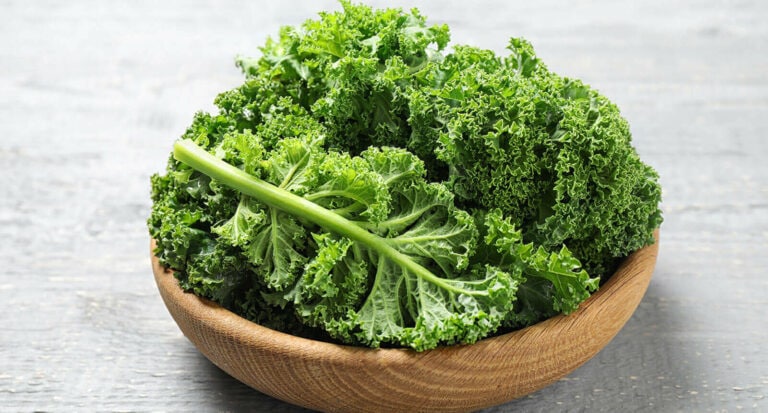
Kale
Kale is a nutrient-rich leafy green vegetable. It’s extremely versatile in cooking.
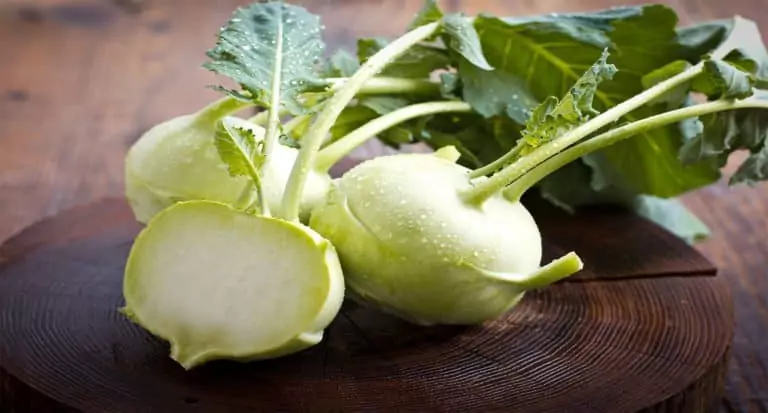
Kohlrabi
Kohlrabi, a mild and sweet vegetable, resembles a turnip and is often eaten raw or cooked for its crisp texture.
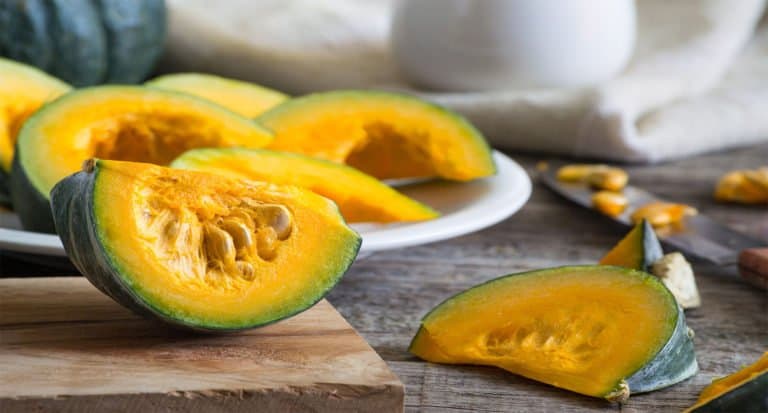
Kabocha
Kabocha is a type of winter squash with a sweet flavor and velvety texture, often used in soups, roasts, and desserts.
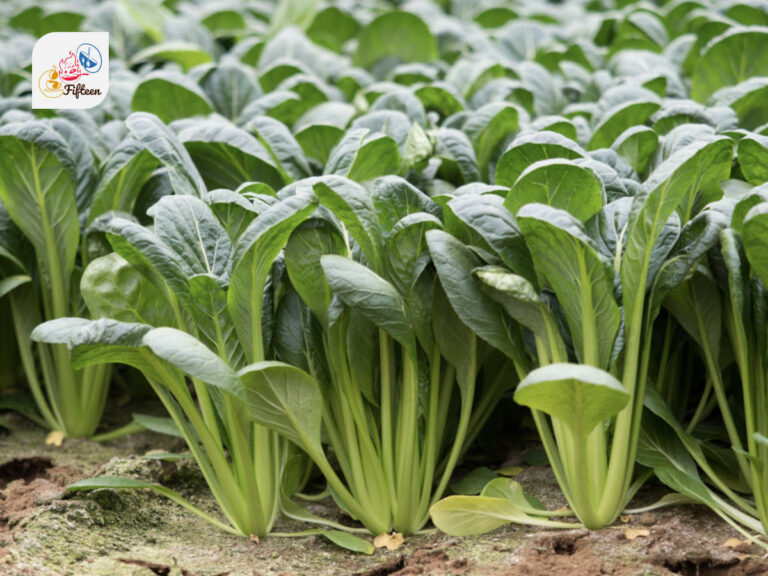
Komatsuna
Komatsuna, or Japanese mustard spinach, is a leafy green vegetable with a slightly sweet and tangy flavor, ideal for salads, soups, and stir-fries.
Indeed, the collection of vegetables starting with the letter K is more extensive.
That’s all about amazing K-named fruits and veggies. Please share your thoughts and ideas with me in the comment section.
If you find this list helpful, please spread the information to your beloved people who may need it. There are other fruits based on other letters of the alphabet, which you can check below. Thank you!



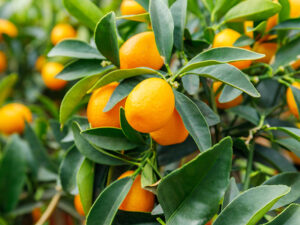
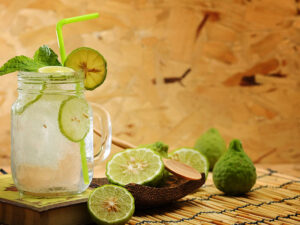
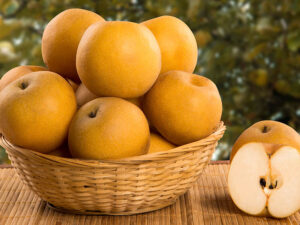
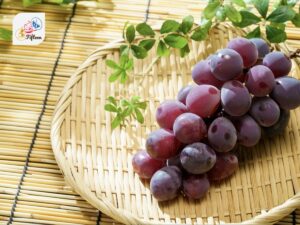
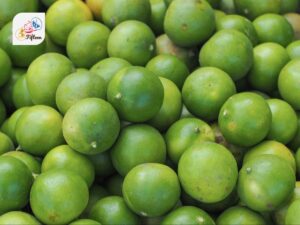
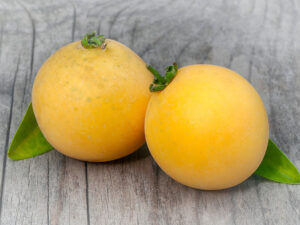
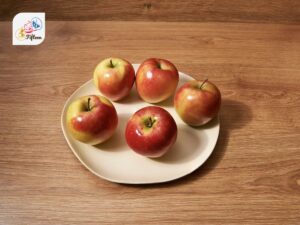
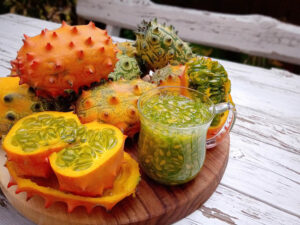
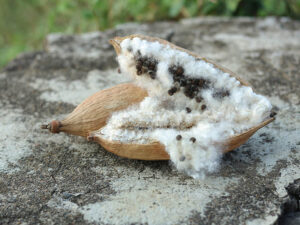
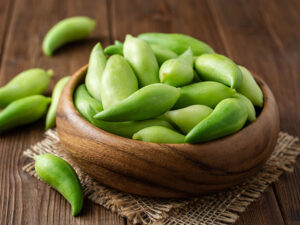
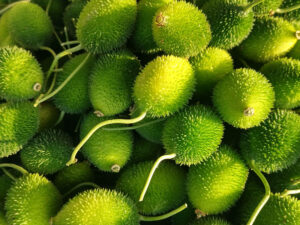
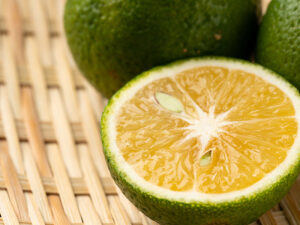
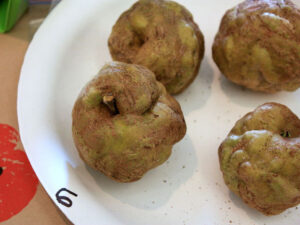
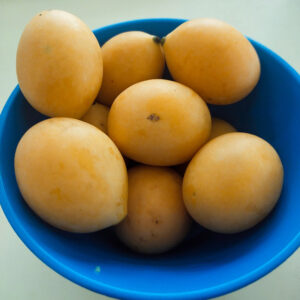
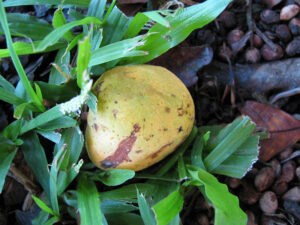
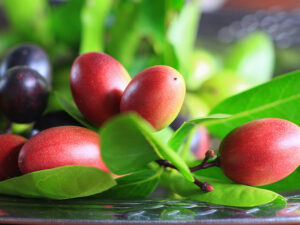
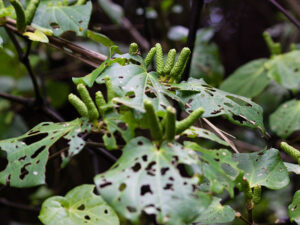
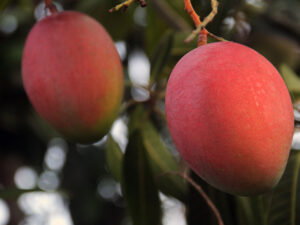
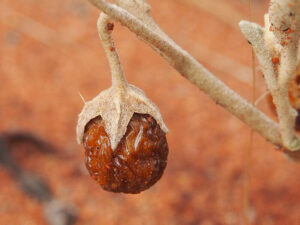
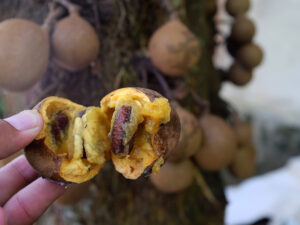
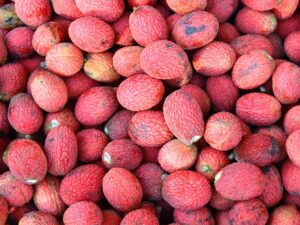
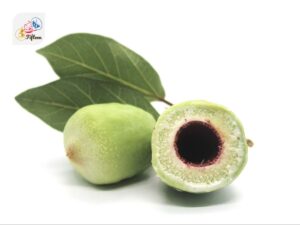
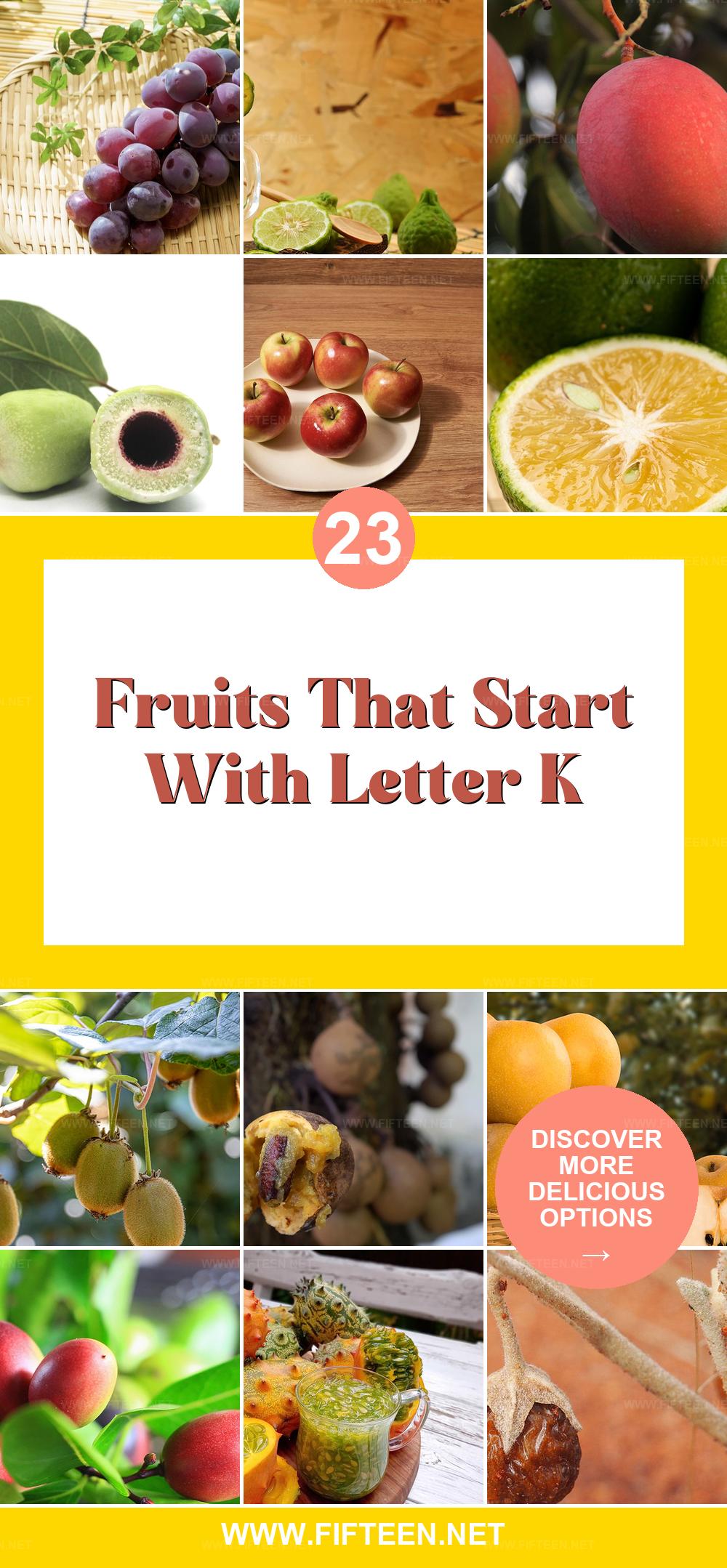
Jamie Scott
Editor in Chief, Senior Content Writer
Expertise
Home Cooking, Meal Planning, Recipe Development, Baking and Pastry, Food Editor, Cooking-video Maker, Western Food Evaluation Expert
Education
Le Cordon Bleu College of Culinary Arts
Local Community College, New York, NY
Jamie Scott is a skilled culinary expert and content creator specializing in Western cuisine. With over 15 years in the culinary field and formal training from Le Cordon Bleu, Paris, Jamie deeply understands how to blend nutrition with delicious flavors. His passion for cooking matches his commitment to making healthy eating accessible and enjoyable.
On Fifteen.net, Jamie brings a fresh perspective to classic dishes and beverages, offering readers insightful recipes, cooking tips, and a fresh view on meal planning that emphasizes taste, health, and simplicity.